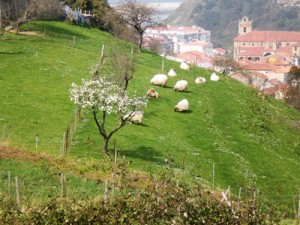Laredo is situated in a beautiful natural place, between the estuary of Treto and the Santoña bay, it is one of the main tourist localities on the Spanish coast. It is one of the “cuatro villas marineras” (four fishing towns) together with San Vicente, Castro Urdiales and Santander.
Visitors come to Laredo, as well as to enjoy its natural charms, to travel to the pass when visiting the Puebla Vieja (old town), in which we can find houses from the XVI and XVIII centuries. Inside the old town there is the gothic temple la Asunción, built between the XIII and XVIII centuries, in which the altarpiece of Bethlehem is found, one of the jewels of polycromated flamenco esculpture. The Puebla Vieja was declared artistic historic ensemble in 1970.
A bit of History
Laredo appears, in its first steps in History, as a settlement of a fishing town to the south of La Atalaya in 757.
The first written reference of the existence of Laredo is found in the Cartulario del Monasterio of Santa María del Puerto de Santoña and dates back from 1068. It appears in the poems of Alfonso X the wise and also mentions Don Quixote when describing its lineage.
In the year 1.200, the King Alfonso VIII awards Laredo the regional code of laws, with 10 Km of coast and 10 Km inland, allowing the flocks of the reign to graze, as if they belongued to the King.
The posrt of Laredo was declared Real Port in 1.529, for the union and the trade with Europe. This was the only fit port from Avilés to Bilbao, for the expeditions to the recently discovered America. Numerous historical characters stopped here, such as Isabella the Catholic I of Castile in 1.496 and her daughter Dña. Joane of Castile. In 1.501, disembarks in Laredo, Catherine of Aragón, daughter of the Catholic Kings of Spain. In 1502 Margaret of Austria, in 1504 Joana The Mad disembarks in Laredo.
The Emperor Carlos V disembarks in Laredo in 1.556, on his last journey to the Yuste Monastery, where he died. In 1.559, the King Felipe II disembarks. The King Alfonso XII visits the village in 1.882, and the Queen Regente Maria Cristina, grants the treatment of concede Excelence, to the Town Hall, in 1.894.





